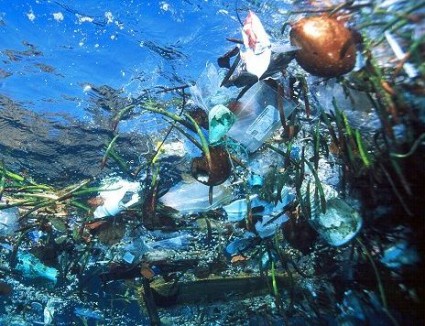Is there a less appetizing phrase than “plastic soup”? (Don’t answer that.) The New York Times Green blog reports on what happens to plastic in the oceans — it turns into a soup of seawater and plastic particles — and what we can do about it. The answer, basically: Try to stop putting so much plastic in the ocean, jackholes.
The canonical image of ocean debris involves bags clogging waterways, fish trapped in six-pack holders, and other visible trash. But in fact, even a major trash nexus like the Atlantic garbage patch looks mostly like clear water until you trawl it. The debris, buffeted by the ocean, turns into a sort of floating plastic sand called “microplastics.” That’s just as bad for fish as six-pack rings, but way harder to get rid of.
Unfortunately, a lot of ocean cleanup programs are modeled on terrestrial litter-control ideas: spot garbage, then pick it up (or, ideally, send someone serving community service to pick it up). For instance, NOAA has an app that allows people to report garbage they spot in waterways, and the EU is considering offering fishermen compensation for aiding the cleanup effort when they catch garbage in their nets. All of this is geared towards macroscopic junk.
But at least it keeps that macroscopic junk from turning into microplastics, which might be the best option available. Microplastic is so hard to remove from the water that our only option might be trying to keep plastic out of the ocean in the first place. As for the plastic soup we’ve already got — we may be stuck with leftovers.



